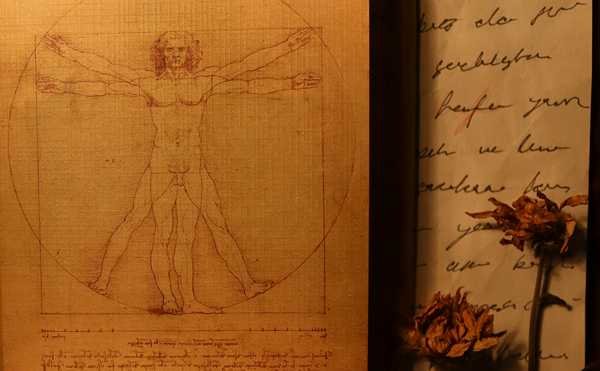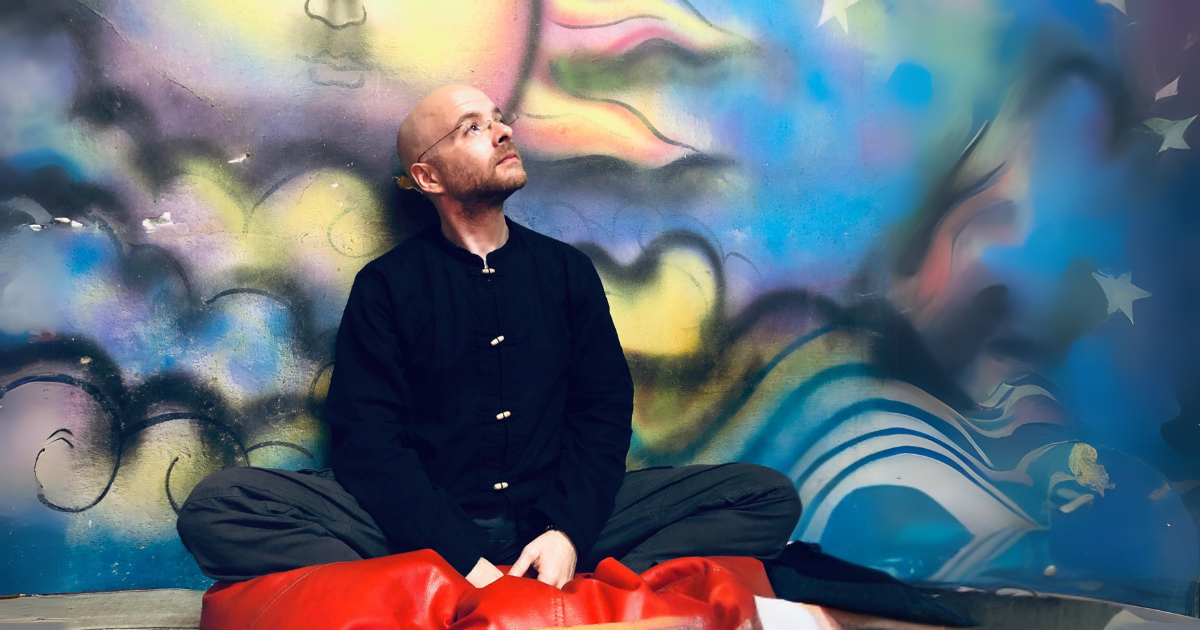“How many times have I been asked: ‘Don’t you get bored repeating the same asanas every time?! What’s the benefit of repeating the same sequence of asanas?!“
In Ashtanga Vinyasa Yoga, the sequences of postures are predetermined. Especially until you reach at least the second series, if not the third series… well, until that point, the practice sequence remains unchanged every day, always the same asanas in the same order.
Here’s the thing… my answer has always been no. Let me explain why.
Contents
Asanas: Your Daily Precious Guide
Practically everything around us is constantly changing. And I’m not just referring to objects. Your thoughts, your moods, your body, are all in a state of continuous transformation.
Not changing the asanas practiced every day can become a point of reference, a measure for the other changes that are inevitable and with which, whether you like it or not, you have to deal. A way to bring awareness into your yoga practice.
If you stayed up late last night and ate something heavy, if you didn’t sleep well, if your mind is full of thoughts about that project you need to finish, or if that comment you made the other day to your partner was something you probably should have avoided… All of these are factors that contribute to how you will start and carry on with your day.
Mettere i piedi sul tappetino dove esegui le stesse asana di ieri può diventare un’opportunità per prendere coscienza dello stato delle cose, qui e ora. Le asana stesse diventano una tua espressione del tuo momento presente e, come tale, un prezioso insegnante. La tua pratica ha quindi il potenziale di diventare come uno specchio, capace di riflettere e mostrare ciò che sta accadendo dentro di te. E come uno specchio, semplicemente riflettere ciò che è, senza giudizi né modificazioni della realtà.
Stepping onto the mat where you perform the same asanas as yesterday offers an opportunity to become aware of the state of things, here and now. The asanas themselves express your present moment and, as such, act as a precious teacher. Your practice then has the potential to serve as a mirror, reflecting and showing what is happening within you. And like a mirror, it simply reflects what is, without judgment or modification of reality.
…if you didn’t digest that big fat cheesy lasagna, here it comes again in Marichyasana D… if your mind is still stuck on that project deadline, it’s going to be tough for Urdhva Dhanurasana and the drop backs to flow smoothly and harmoniously…
The Grammar of Asanas

How To Practice Your Asanas?
…and here opens a whole new world of approaches and alternatives on how to tackle your practice…
The way we all initially learn the asanas is a bit like a monkey watching a movement and trying to repeat it exactly as it perceived it. Some asanas come easily to us, others less so, and some still seem completely out of reach.
“…Me?! No, I’ll never be able to get my leg behind my head, I’m not flexible!!”
Proceeding on the path of asanas and refining one’s practice is not so different from the process through which a child learns their language. Initially, they hear sounds and start to attach meaning to them, using them imperfectly. Without knowing whether they are nouns or verbs, or how to write them. Then, little by little, as they begin to use simple expressions:
“Ciao Bella! Mi chiamo Alan, come ti chiami?…”
We start learning the alphabet, words and their classification, the correct order of terms to form sentences, and from there begins a new way of understanding the language, grammatical rules, characteristic expressions… until becoming a native speaker.
La tua pratica asana può funzionare esattamente come un linguaggio. Il tuo linguaggio con te stesso. Per proseguire nella crescita della pratica con il suo alfabeto, parole, regole, ecc, l’approccio che ho trovato più efficace negli anni è di imparare quella che ho chiamato la Grammatica delle Asana.
Your asana practice can function exactly like a language. Your language with yourself. To continue the growth of your practice with its alphabet, words, rules, etc., the approach I’ve found most effective over the years is to learn what I call the Grammar of Asanas.
It consists of three fundamental pillars, which encompass deeper levels of understanding to work on over time. In my opinion, it’s necessary to develop all three of these parts in order to become an experienced practitioner.
“…no, I’m not talking about handstands… or well, not necessarily 😉“
The Grammar of Asanas consists of:
- Alignment: at first, alignment is physical, but gradually you will discover that there are also breath, bandhas, prana, drishti, and other energetic components to consider.
Fundamentally, it is the ability to perform an asana correctly from an anatomical perspective, with the goal of practicing safely and avoiding injuries. This is why you often hear teachers repeating: “knee over ankle… don’t let the leg fall inwards… arms extended… wrists, shoulders, and hips aligned…” Injuries are never pleasant, and if they are serious, there is the risk of a game over.
Personally, the main goal of my daily practice is to reach the end of the sequence in a physical and mental state that allows me and motivates me to practice again the following day. Practice is, first and foremost, a moment for oneself, a time to find space… - Intention: the monkey repeats the movement, but without awareness; its movement is empty. Intention is what we aim to achieve through the execution of a posture. If alignment is the structure we intend to move, intention is the force that drives the movement.
Without intention, there is no conscious movement, only mimicking. …Which is not exactly in line with the idea of yoga…
Initially, the intentions of an asana may be unclear. Ok, Paschimottanasana is a hamstring stretch, easy. But what intentions do you have when performing Marichyasana A, for example? A forward fold? Yes, correct, it’s part of the family of poses that can be classified as forward bends.
Just as words don’t have only one meaning, asanas don’t contain just one intention. So, the intention guiding Paschimottanasana could be to extend the stretch not only to the hamstrings but all the way to the calves, or perhaps to focus on the interaction between the lower back and the entire back of the leg, or even to work on the entire Anterior Superficial Line of the fascia, from the soles of the feet to the forehead. And Marichyasana A, instead of seeing it only as a forward fold, could be used to open the hips and work towards an easier lotus posture, or perhaps to focus on the shoulders…
Each posture is a tool that can be used in different ways with varying intentions. Is it really necessary to change the sequence of asanas? - Expression: we’ve talked about the structure to move, we’ve discovered a motor to move it, now we just need the direction: the expression of the asana.
The length of your arms is different from someone else’s, as is the ratio between your torso and legs, or the shape of the femoral head and acetabulum joint. But beyond the anatomical aspect, each day we are different from the day before. Our bodies change, cells regenerate, the adventures of life alternate, our mental states and reactions to what happens to us constantly change and evolve…
An asana takes all of this into account. Whether you are aware of it or not, your expression of an asana is an orchestrated expression of all the variables that make up your being at that precise moment. Your asana practice is the experience of that expression.
In its initial form, your expression of an asana may involve modifying a posture, such as placing your hand on your leg in Trikonasana because you can’t reach the floor, or putting your hands on your ankles or calves instead of on your heels when performing Kapotasana.
…For example, in the first series, after Utkatasana, I always do a handstand…
In its more mature form, the expression of an asana doesn’t necessarily have to be visible from the outside, but rather it is an inner experience.
Final Reflection
These are the reasons why I feel confident in saying that it is absolutely not a limitation to repeat the same sequence of asanas every day. On the contrary, in many cases, the opposite is true.
The constant variation of asanas can be a manifestation of mental fluctuations, which leads us to avoid stepping out of our comfort zone. Outside of the comfort zone, we are uncomfortable, but it is there that growth happens.
…mental fluctuations, yes, the same vrttis that Patanjali’s Yoga teaches us to control…
That said, I don’t mean to imply that it’s absolutely wrong to modify the sequence of postures. Each person’s uniqueness would ideally call for a personalized set of asanas.
But here we enter into a paradox of the evolutionary path: in order to modify the sequence of postures correctly, one must be an experienced practitioner with the ability to make conscious choices. However, the moment when you benefit most from modifying the sequence is when you are a beginner… This is one of the reasons why Ashtanga Vinyasa Yoga, like many other practices, requires an experienced teacher to be learned correctly.
…When you are a beginner, you should modify, but you lack the ability to discern. When you have this ability, you will probably no longer need to modify the sequence…
Explore Your Practice – Find Your Voice






